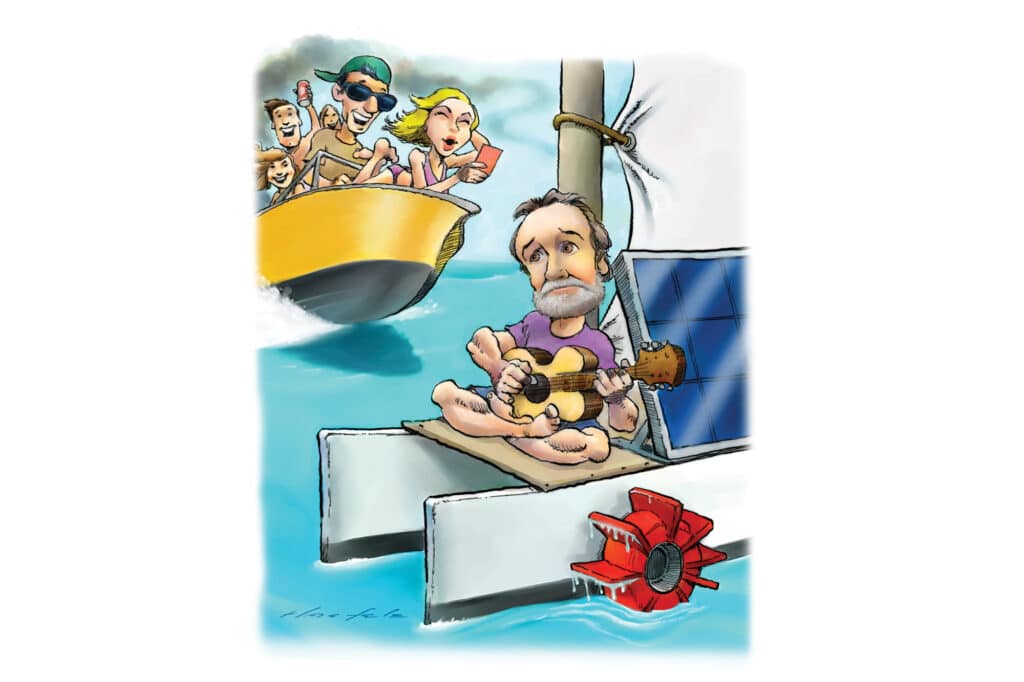
There’s been electricity in the air as prognosticators of the marine industry anticipate the more environmentally savvy generations’ embrace of boating. Some builders have touched the wire with hybrids, while others put their fingers in the socket, building electric outboards, drives and boats. The technology seems ready for prime time, but are we?
The state of the waterway in my home state of Florida suggests we’ve got some work to do. Boaters charge down the waterway with no apparent concern for fuel burn. They’re either oblivious to speed limits or are simply ignoring them. Water cops are overwhelmed just trying to keep them from running into day markers—and one another.
What’s the hurry? Beats me, and I’m a boomer. Going fast on fossil fuel is overrated, and, these days, it burns Benjamins more efficiently than hydrogen. Fast, of course, is a relative term. The fastest boat I’ve owned was a flats skiff. While it could make 55 knots downwind, it had a “governor,” my wife. She’d holler at me if I went much past 20 knots.
And 18 knots was the sweet spot for our 37-foot convertible. I traversed the Gulf Stream and wandered the Bahamas for two decades, rarely having to adjust the throttles. Folks with big center-consoles could make the crossing in a fraction of the time, but they were usually beaten, bruised and still drying off by the time we were having a Kalik and a conch salad.
Is it possible we could put our idle time in idle and noodle this reality?
I recall, back in the 1990s, a brainy boomer peddling a concept at a conclave I attended that promoted thinking out of the box. We were instructed to form groups, dream up five ideas and rank them for potential efficacy. We then had to pick the worst idea and pitch it.
Read More from Jay Coyle: Tell Tales
I shall now follow that same formula. I’m thinking cats. No, not Caterpillars; despite my past ranting about multihulls, I’m talking about a catamaran. And forget what I’ve said about plumb stems, for this boat would have two. They are purposeful on a cat, as they optimize volume for a given length. While I’ve always encouraged right-tech instead of high-tech construction, this boat would need the latter.
There would be no flex-fuel workarounds or complicated hybrids; that’s just adding weight and stuff to fix. The bilge would have more stowage than a wasted lithium mine. Mixing electricity and water never ends well, so this boat would be wired like a floating GFI outlet. Going down sea, the wheels would provide regenerative braking. At anchor, they’d generate current from the slightest current.
Best of all, my design would be fitted with a fail-safe propulsion device that’s proved reliable for centuries: a sail. Better yet, a solar wing to keep the juice flowing. Such a boat is possible, if we were willing to slow down. But nowadays, that would be thinking out of the box.









